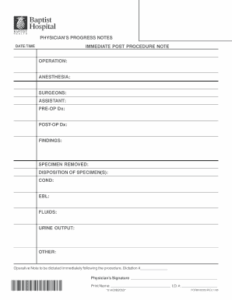Ever felt a bit lost navigating the world of medical or research paperwork? You’re definitely not alone! Informed consent is a cornerstone of ethical practice in healthcare and research, making sure individuals understand what they’re agreeing to before undergoing any procedure or participating in a study. But what does the “documentation” part of it all really entail? Let’s break it down in a way that’s easy to understand.
Think of informed consent like a really important conversation. It’s not just about signing a form, although that’s a crucial part. It’s about ensuring that someone is provided with all the necessary information in a clear, understandable way, so they can make a voluntary decision about their care or participation. The documentation of informed consent template serves as a roadmap and a record of this conversation.
This article will delve into why having proper documentation is so important, what elements should be included in a solid informed consent template, and how to make sure the process is as smooth and transparent as possible for everyone involved. We’ll explore the legal and ethical reasons behind it, and provide insights into creating templates that truly serve the purpose of informed decision-making. Let’s get started on making this process less daunting and more empowering.
Understanding the Importance of Comprehensive Documentation
Why is documenting informed consent so critical? Well, for starters, it serves as legal protection for both the patient or participant and the healthcare provider or researcher. It’s proof that a conversation took place, that the individual was informed of the risks and benefits involved, and that they voluntarily agreed to proceed. Without proper documentation, it becomes very difficult to demonstrate that informed consent was actually obtained.
Beyond the legal aspects, ethical considerations are paramount. Informed consent is rooted in the principles of autonomy and respect for persons. It acknowledges the right of individuals to make their own decisions about their health and well-being. Comprehensive documentation ensures that this right is upheld. It’s not just about ticking boxes; it’s about demonstrating a genuine commitment to respecting individual autonomy.
Furthermore, clear and thorough documentation facilitates continuity of care or research. If a patient seeks a second opinion, or if a research participant transfers to another study site, the documentation of informed consent serves as a valuable record of their prior understanding and agreement. This prevents misunderstandings and ensures that everyone is on the same page.
In essence, the documentation of informed consent is a vital tool for promoting trust and transparency in healthcare and research settings. It provides a clear audit trail of the informed consent process, protecting the rights and well-being of individuals while also safeguarding the interests of healthcare providers and researchers. When done right, the documentation of informed consent template can streamline the process while upholding ethical standards.
Creating the documentation of informed consent template might seem difficult, but it’s absolutely achievable with careful attention to detail. A well-designed template ensures that all crucial elements are covered, reducing the risk of omissions or ambiguities. This leads to a more robust and defensible informed consent process overall.
Key Elements of an Effective Informed Consent Template
So, what exactly should be included in a good documentation of informed consent template? Here are some essential components:
First and foremost, clearly state the purpose of the procedure, treatment, or research. Explain what is going to happen, why it is being done, and what the expected outcomes are. Use plain language that the average person can easily understand. Avoid technical jargon or overly complex terminology.
Next, thoroughly outline the potential risks and benefits. Be honest and transparent about the possible downsides, even if they are rare. Similarly, clearly articulate the potential benefits, but avoid making unrealistic promises. A balanced and objective presentation of the risks and benefits is crucial for informed decision-making.
Also, describe any alternative treatments or procedures that are available. Individuals should be aware of all their options, including the option of doing nothing. Provide sufficient information about these alternatives so they can make an informed comparison.
Include a statement confirming that the individual has the right to ask questions and receive satisfactory answers. Emphasize that they are free to withdraw their consent at any time, without penalty. This reinforces the voluntary nature of informed consent. Document that the individual had the opportunity to ask questions, and summarize the key questions and answers.
Finally, the template should include spaces for the individual’s signature, the date, and the signature of the person obtaining consent. The format should be clear and easy to read. It might be beneficial to include a section that explains how data will be handled and stored to maintain privacy. All of these elements work together to give a documentation of informed consent template its intended function.
By following these guidelines, you can create effective informed consent templates that promote ethical and legally sound practices. This will increase the safety for everyone involved and promote the overall ethical standards of your processes.
It’s all about ensuring the patient has all the information they need to make the best choices for their own care, and that everything is clearly documented. A comprehensive documentation of informed consent template makes all the difference.



